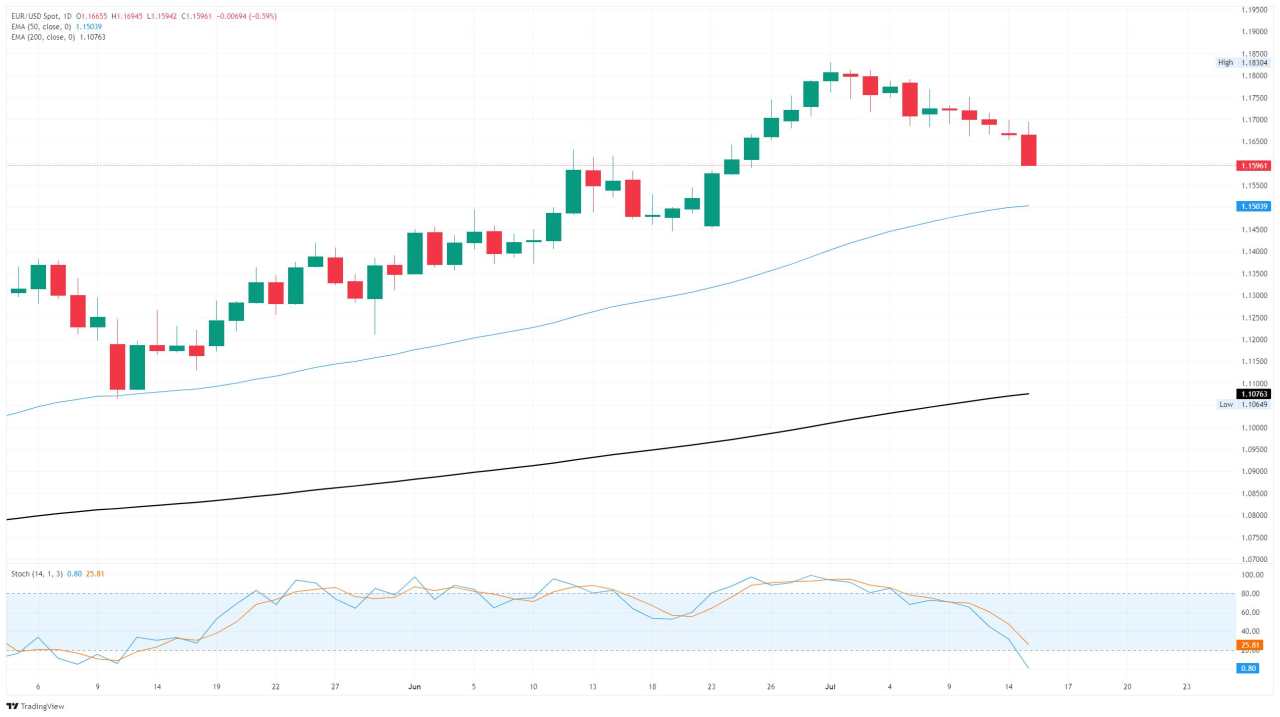- EUR/USD accelerated into the low side on Tuesday after US CPI inflation flashed its first warning sign.
- Fed rate cut hopes are withering on the vine as rising price pressures shred investor optimism.
EUR/USD backslid on Tuesday, falling over eight-tenths of one percent and tumbling into its lowest bids in nearly three weeks. Investors repriced their bets on a September rate cut from the Federal Reserve (Fed) after US Consumer Price Index (CPI) inflation rose in June, reversing deflationary progress.
Rising prices sink Fed rate cut hopes
U.S. Consumer Price Index (CPI) inflation increased gradually through the end of the second quarter. Although the figures generally met or even beat expectations, investors continue to see the impact of rising prices. In June, the annualized headline CPI inflation rate rose to 2.7% year-over-year, moving away from the Federal Reserve’s target range of 2%. With inflation persisting, expectations for an early rate reduction by the Federal Reserve have diminished.
According to the CME’s FedWatch Tool, market participants now fully anticipate the Federal Reserve to maintain current rates at the July meeting. Additionally, expectations for a rate cut in September have decreased following the CPI release, with a 44% probability that rates will remain unchanged. Nevertheless, markets remain optimistic about the possibility of two rate cuts in 2025, with an 80% likelihood of at least a quarter-point reduction in October, followed by a subsequent rate adjustment in December.
EUR/USD daily chart

Fed FAQs
Monetary policy in the US is shaped by the Federal Reserve (Fed). The Fed has two mandates: to achieve price stability and foster full employment. Its primary tool to achieve these goals is by adjusting interest rates. When prices are rising too quickly and inflation is above the Fed’s 2% target, it raises interest rates, increasing borrowing costs throughout the economy. This results in a stronger US Dollar (USD) as it makes the US a more attractive place for international investors to park their money. When inflation falls below 2% or the Unemployment Rate is too high, the Fed may lower interest rates to encourage borrowing, which weighs on the Greenback.
The Federal Reserve (Fed) holds eight policy meetings a year, where the Federal Open Market Committee (FOMC) assesses economic conditions and makes monetary policy decisions. The FOMC is attended by twelve Fed officials – the seven members of the Board of Governors, the president of the Federal Reserve Bank of New York, and four of the remaining eleven regional Reserve Bank presidents, who serve one-year terms on a rotating basis.
In extreme situations, the Federal Reserve may resort to a policy named Quantitative Easing (QE). QE is the process by which the Fed substantially increases the flow of credit in a stuck financial system. It is a non-standard policy measure used during crises or when inflation is extremely low. It was the Fed’s weapon of choice during the Great Financial Crisis in 2008. It involves the Fed printing more Dollars and using them to buy high grade bonds from financial institutions. QE usually weakens the US Dollar.
Quantitative tightening (QT) is the reverse process of QE, whereby the Federal Reserve stops buying bonds from financial institutions and does not reinvest the principal from the bonds it holds maturing, to purchase new bonds. It is usually positive for the value of the US Dollar.
作者:Joshua Gibson,文章来源FXStreet,版权归原作者所有,如有侵权请联系本人删除。
风险提示:以上内容仅代表作者或嘉宾的观点,不代表 FOLLOWME 的任何观点及立场,且不代表 FOLLOWME 同意其说法或描述,也不构成任何投资建议。对于访问者根据 FOLLOWME 社区提供的信息所做出的一切行为,除非另有明确的书面承诺文件,否则本社区不承担任何形式的责任。
FOLLOWME 交易社区网址: www.followme.ceo


加载失败()